- Overview
- Itinerary
- Includes/Excludes
- Gallery
- FAQ
- Reviews
The Light of Buddha 12N13D
The Light of Buddha, a 13-day and 12-night tour package takes you on a spiritual tour through Buddhist India, where Buddhism originated more than 2,500 years ago. It's a sacred journey to different places where Lord Buddha meditated and attained spiritual enlightenment. The tour also takes you to the religious sojourn in the major temples and stupas. Places on the itinerary are Mayadevi Temple in Lumbini, Mahabodhi Temple in Bodh Gaya, Dharma Stupa in Sarnath, and also Rambhar Stupa and Mahaparinirvana Temple in Kushinagar. It also takes you to Rajgir, Nalanda UNESCO World site, Vaishali, Kesariya, and Srawasti. Indeed our package includes all these architectural splendors as well as the other spots linked with early Buddhism.
India is one of the most spiritual nations around the globe. Many tourists from all over the world visit India in quest of spirituality and salvation. Buddhism is one of the most prominent religions in India. Some of the major Buddhist sites are Bodhgaya, Varanasi, Sarnath, and Kushinagar. Our neighbor country Nepal is also a famous religious spot for Buddhism. The places like Lumbini and Kathmandu are known for their religious value in Buddhism. The Light of Buddha is an ideal tour package for travelers who want to follow in the footsteps of Lord Buddha.
Gautam Buddha is called the “Light Of Asia". "The Light of Asia' is an epic poem by Sir Edwin Arnold that was first published in 1879. It quickly became a huge sensation. The poem describes the life and time of Prince Gautama Siddhartha, who after attaining enlightenment became the Buddha. Since he gave the message of truth, peace, humanity, and equality. The Buddha brought the world a philosophy in which to navigate the world of suffering.
Tour Highlights
- Visit the Mahabodhi Temple, Bodhi Tree, and Great Statue of Buddha
- Visit the famous Shanti Stupa
- Visit Mahaparinirvana Temple
- Boat riding on the holy river the Ganges
- Visit the Taj Mahal in Agra
- Visit Delhi full-day
Hotels Options
|
City/ Class |
4 Star |
5 Star |
|
Delhi |
ACR |
Pride |
|
Varanasi |
Ramada |
Radisson |
|
Bodhgaya |
Residency |
Imperial |
|
Bodhgaya |
Residency |
Imperial |
|
Rajgir |
CLARKS |
Residency |
|
Kushinagar |
Lotus |
Imperial |
|
Lumbini |
Imperial |
Nirwana |
|
Lumbini |
CLARKS |
Pawan |
|
Srawasti |
CLARKS |
Platinum |
|
Lucknow |
Vaibhav Inn |
Piccadilly |
Itineraries
Day 1
Arrive at Delhi
On arrival, you will be transferred to a hotel.
Day 2
Delhi - Varanasi by Flight
Morning half day sightseeing of Delhi, afternoon take the flight for Varanasi.
New Delhi is a modern planned city designed by Edwin Lutyens and Herbert Baker. It is a spacious, open city that houses many government buildings and embassies. Notable attractions in New Delhi include the Rashtrapati Bhawan, Laxminarayan Temple (built by the Birlas, one of India's leading industrial families), Humayun's Tomb, Purana Quila, built by Humayun, Qutab Minar and the lotus-shaped Baha'i Temple. Delhi is a city of gardens and fountains, notable examples being the Roshan Ara Gardens, Mughal Gardens, Lodhi Gardens etc.
India Gate - This 42-metre high stone arc of triumph bears the names of 85,000 Indian army soldiers who died in the campaign of WW I, the North-West Frontier operations of the same time and the 1919 Afghan fiasco.
Rashtrapati Bhavan - The official residence of the President of India stands at the opposite end of the Rajpath from India Gate. Completed in 1929, the palace-like building is a blend of Mughal and Western architectural styles, the most obvious Indian feature being the huge copper dome.
Sansad Bhavan - Sansad Bhavan or the Parliament House from outside presents an unbroken circle of high buff pillars, and a higher storey (not originally planned) that screens a central dome. It was in this building the constituent assembly sat for three years to prepare the constitution of free India. Built on three levels, it has a red sandstone foundation storey, a buff coloured storey with 144 pillars and a small attic storey. Specially imported acoustic tiles were used on the walls and sound absorbing plaster on the ceiling. The Parliament library is one of the most impressive in Asia. The Parliament House has amazing constructive geometric qualities
Day 3
Varanasi - Sarnath - Bodhgaya by Taxi
Sarnath, where the Buddha preached his first sermon in Deer Park, contains the most impressive remains, as well as a modern temple. The Dharmarajika, Chaukhandi, and Dharnek stupas are outstanding. There are also the remains of a monastery, and the beautifully polished Lion Capital of Ashoka. Sarnath contains a rich library and at the Mulagandha Kuti Vihara there are excellent frescoes by Kosetsu Nosu. The Sarnath Museum, not far from the site, contains some of the finest specimens of Buddhist sculpture. Among all centers of Buddhist worship, the Vaisakha (April-May) full moon is observed as the anniversary of three important events - the Buddha's birth, enlightenment, and death, while the Asadh (July - August) full moon is observed as the anniversary of his first sermon.
Varanasi
Early morning Boat ride in river Ganges is the most fascinating aspect of Varanasi. Watch thousands of worshippers in obeisance before Sun God. Return to the Hotel for Breakfast and check out.
Day 4
Bodhgaya
As the place of the Buddha's Enlightenment, Bodhgaya is the spiritual home of Buddhists. It attracts tens of thousands of believers from all over the world. Bodhgaya situated near the river Niranjana is one of the holiest Buddhist pilgrimage centers since it was here that Buddha attained enlightenment under the Bodhi tree. The population of this town is 22,000 and is situated at an altitude of 113 m. The maximum temperature in summer rises to 45-47 degrees Celsius and the minimum is 27 degrees, while in winter maximum is 28 degrees and the minimum is 4 degrees. It receives an annual rainfall of 1,860 mm. Most countries with a vast Buddhist population have a temple or monastery here
Day 5
Bodhgaya - Nalanda - Rajgirh
Nalanda was the most renowned university in ancient India. It derived its name from Na-alam-da, meaning Insatiable in Giving, one of the names by which the Lord Buddha was known. Established in the 5th century B.C. it remained a live center of learning till the 12th century A.D. when it was destroyed by the invader Bakhtiar Khilji. Lord Mahavira and the Buddha both taught here for years. Hsuan Tsang. The Chinese traveler studied here in the 7th century A.D. and there is a monument in his memory. He was one amongst many of those from East and Southeast Asia who came here to study logic, meta-physics, medicine, prose composition and rhetoric. The university of Nalanda offered free educational and residential facilities to as many as 10,000 students and 2000 teachers, for it was supported by a number of villages. Its library, Ratna Sagar, is believed to have contained nine million volumes. It is not surprising, then, that the destruction of this university dealt a crippling blow to Buddhist education in India.
The Archaeological Survey of India maintains the Nalanda Museum across the road which houses some exquisite bronzes of the 9th and 10th centuries, Pala dynasty, and other remains excavated at the site. The beautiful Thai Temple and the Nava Nalanda Mahavihara, a centre for research in Pali and Buddhist studies, are 2 km from the main site.
RAJGIR
The picturesque Rajgir or Rajagriha as it was known in the past (literally, the abode of kings) is surrounded by the meandering river Banganga and 5 hills. During the lifetime of the Buddha, this was the capital of the powerful Magadha kingdom, ruled by the virtuous King Bimbisara. The hills and caves surrounding Rajagriha were home to spiritual teachers, ranging from the materialism of the early Charvaka school to the metaphysics of Upanishadic philosophers.
Like many others in search of truth, Prince Siddhartha, after he renounced his royal heritage came to this city to seek the path of vation. Siddhartha overwhelmed the citizens of Rajagriha with his serenity and grace. Even the king went to meet the ascetic and was amazed to learn that he was a kshatriya of royal descent. Bimbisara offered half his kingdom to Siddhartha but all he received was an assurance that when Siddhartha achieved his goal he would return to Rajagriha. The first Buddhist structures at Rajgirh were raised when Ajadsatru built a monastery, and a stupa over his share of the Buddha's ashes.
Day 6
Rajgirh - Patna - Vaishali - Kushinagar
Five years after the Enlightenment in Bodh Gaya, Lord Buddha came to Vaishali, the capital of one of the first republican states in the world. Situated on the northern banks of the Ganga, Vaishali is bound by the hills of Nepal on the north and the river Gandak on the west. The Lichchavi nobility came to receive the Enlightened One with a cavalcade of elephants and chariots bedecked with gold. As the Lord set foot on the soil of Vaishali, loud thunder followed by a heavy downpour purged the plague-infected city. The Buddha preached the Ratna Sutra to those assembled, and eighty-four thousand people embraced the new faith. In Vaishali, for the first time, women were ordained into the Sangha. The Buddha's foster mother, Mahaprajapati Gautami, along with 500 Sakyan women made a pilgrimage by foot from Kapilavastu to Vaishali, seeking to join the Order. Three times the Lord refused their entreaties. Ultimately they shaved their heads, donned the orange robes, and beseech the Lord once again. The Enlightened One was finally persuaded to admit the women as bhikkhunis or nuns.
Ashokan Pillar: Emperor Ashoka built The Lion Pillar at Kolhua. It is made of a highly polished single piece of red sandstone, surmounted by a bell-shaped capital, 18.3 m high. A life-size figure of a lion is placed on top of the stupa at Kolhua to commemorate Buddha's last sermon.
Day 7
Kushinagar - Lumbini
Kushinagar is one of the principal centers of Buddhist pilgrimage and is the place of Mahaparinirvana. Amongst the ruins are the Mukutbandhan Stupa and a beautiful statue of the reclining Buddha. An inscribed relic casket was dug out of the ruins of a stupa at Piprahwa, now identified as Kapilavastu. The main site of the Nirvana Temple houses over the 6-meter long statue of the reclining Buddha The image was unearthed during the excavations in 1876.
Day 8
Lumbini - Kapilavastu - Sravasti
Lumbini, the birthplace of the Buddha, was located in 1890 after being untraced for 1,500 years. Lumbini grove, the sacred site of Lord Buddha's birth is today a small village in Nepal, 27 kms from Sunauli on the Indo-Nepal Border. Three hundred years after the Mahaparinirvana, Emperor Ashoka visited Lumbini and erected a pillar there. This pillar, though broken, still remains at the site. It is known as the Rummendei Pillar after the earlier name of the place (modern name Rupandhei)in Nepal.
Lumbini's Mayadevi Mandir, an ancient stone relief depicting Budha's birth, dates back to the 2nd century. The marble copy close by depicts the newborn Buddha being blessed by Brahma and Mayadevi, Buddha's mother.
Day 9
Sravasti - Lucknow
Sravasti, the capital of the ancient kingdom of Kosala, has the honor of sheltering Buddha for 24 rainy seasons in the Jetavana Gardens. The city, believed to be founded by the mythological king Sravast, has age-old stupas, majestic monasteries, and several temples. Buddha is said to have performed some miracles here. This holy place also has the famous Anand Bodhi tree, an offspring of the one, said to have been planted by Buddha's main disciple
Day 10
Lucknow - Sankasia - Agra
Sankisa lies in central Uttar Pradesh, 47 km from Farrukhabad. It is believed to be the place where Buddha, along with Brahma and Devraj Indra descended after giving sermons to his mother in heaven.
At the spot of descent stands a temple with a statue of the Buddha. The place is also known for a temple dedicated to Bisari Devi and an excavated Ashokan Elephant Pillar.
Day 11
Agra
Half day city tour visiting the World famous Taj Mahal built by Mughal Emperor Shah Jehan in the year 1652 as a memorial for his beloved wife Mumtaz Mahal. The grandeur called the Taj is perhaps the most photographed, filmed, described, and sketched buildings of the world. Taj Mahal is where fantasy coincides with reality in perfect harmony. An inspiration for numerous artists over the centuries, the Taj is an ode to love. It took 22 years to create this jewel
Agra is known for its superb inlay work on marble and stone by craftsmen who are descendants of those who worked under the Mughals. The city is also famous for its carpets, gold thread embroidery, and leather shoes. Agra was once the capital of the Mughal empire and even today it seems to linger in the past. Not surprisingly, the Mughal emperors with their passion for building endowed the city with some of the finest structures in the world.
Day 12
Agra- Delhi
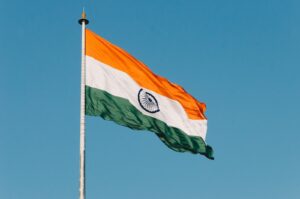
 In time transfer to Delhi International airport to connect flight for your onward destination.
In time transfer to Delhi International airport to connect flight for your onward destination.
IMP: Check-in time at the airport is 03 Hrs. prior to the scheduled departure of the flight.
Includes
- Accommodation: 12 nights hotel accommodation on twin sharing basis.
- Meals: 12 Breakfasts, 11 Lunches and 11 Dinners.
- Transport: All ground transport for sightseeing trips by the air-condition Car and english-speaking driver.
- Airport Services: Private air-conditioned car with driver Company staff for airport assistance.
- Sightseeing: Monuments Entrance fees as per sightseeing.
- Guides / Escorts: Expert local tour guides for sightseeing tours.
- We will provide One Bottle of mineral water per day per pax.
- All currently applicable taxes of Hotel & Transport as per the itinerary.
Excludes
- Any Airfare international or domestic, Airport Departure Tax, Insurance, Visa, etc.
- Any personal nature item like film roll, telephone calls, etc.
- Any other item which is not included in our cost includes a heading.
Quotes are valid for dates mentioned in each of the proposals based on the dates mentioned in our proposal. Domestic Flights schedules/fares are subject to change and will be charged as applicable at the time of booking of the tour. Accommodation will be provided in the hotels mentioned or alternate hotels in the similar category
50% of the Tour cost is to be paid by the guest in advance upon receiving confirmation status of the package. However, if any Air ticket Domestic or International is to be booked and issued by LPI Travels 100% Advance for the air ticket is required to be paid by the guest at the time of booking.
We strongly recommend speaking to a company representative at least once before making the online advance payment (during business days)
After every payment is received, an automatic payment confirmation mail will be sent.
Prices mentioned per person are on a twin-sharing basis (2 persons sharing one room).
No more than 3 adults are allowed in one room.
The third occupant of the room shall be provided a mattress/rollaway or an extra bed.
Our quotations are not budgeted for any increase in taxes, the introduction of new taxes, an increase in entrance fees to any monuments mentioned in the itinerary, or an increase in domestic airfares. Hence our quotations are subject to change and we would have to ask you to absorb the cost. You will be informed as soon as any Indian Govt. Agency or Airlines introduce the above changes.
All passengers must be covered by suitable International Travel/ Health insurance prior to departure from the country of origin. Our package does not include any Insurance facility.
All arrangements for transportation, accommodation, transfers, and sightseeing will be made by Leisure & Pleasure International Pvt. Ltd. as agent for the passenger upon the express condition that we shall not be held liable for any injury, damage, loss, accident or irregularity which may be caused by any company or person employed in the operation of the tour.
LPI Travels reserves the right to adjust the itinerary and timings in the best interests of the guest. LPI Travels will do its best to adhere to the Timing Schedule provided as far as possible. A visa is required to visit India.
CANCELLATION FEES:
More than 60 days before tour Nil.
Between 59-40 days before the tour 25% of the tour cost.
Between 39-20 days before the tour 50% of the tour cost.
Less than 20 days & No show 100% retention charges will apply.
All payments to be transferred directly to our Company bank account the details are:
50% cost to be remitted at the time of conformation of the booking. Full tour prior to arrival of the clients into India.
If your clients avail of any additional services in India, then payment must be made to our office in India, before they depart India. No credit will be provided.
Our office in India will process all refunds, as these have to be channelled through The Reserve Bank of India. The process is a lengthy one and takes approximately ten to twelve weeks.
Please refer to Terms & Conditions.


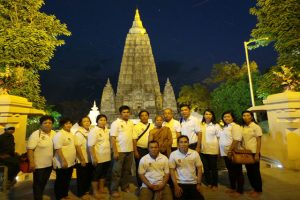


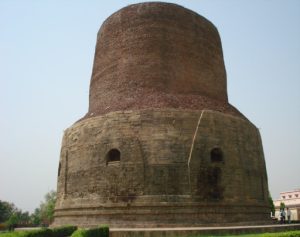
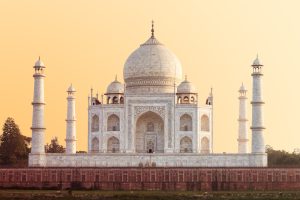

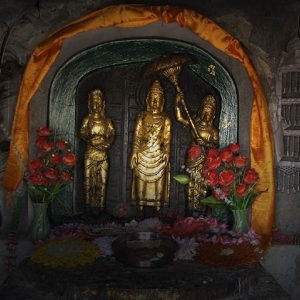


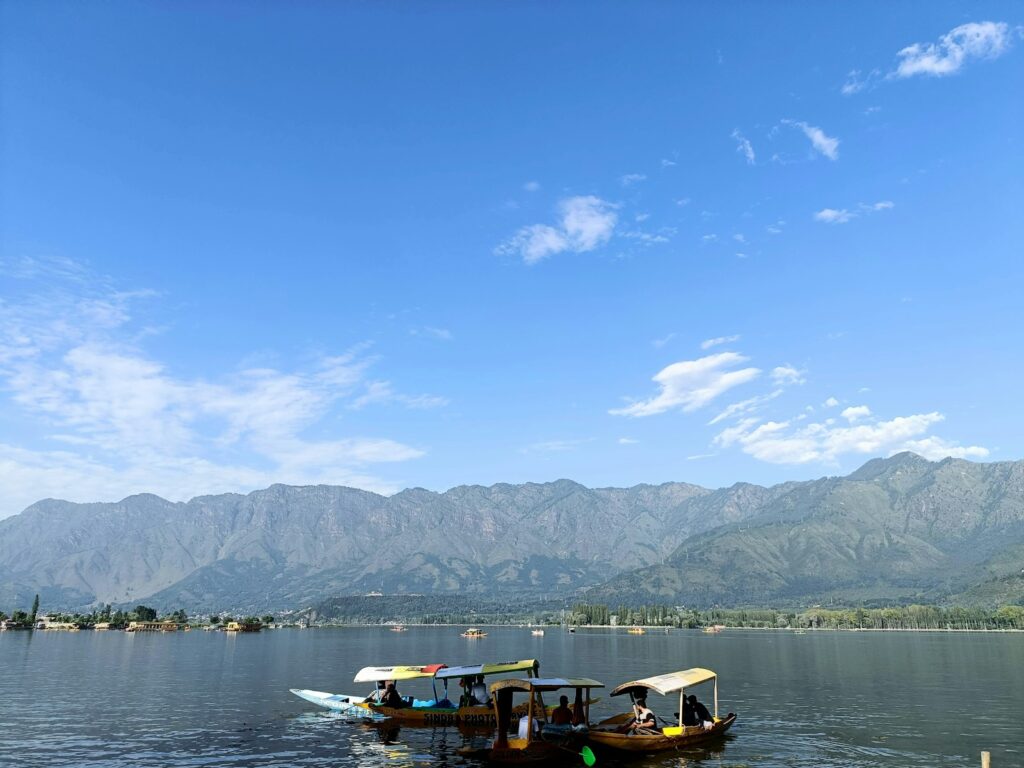

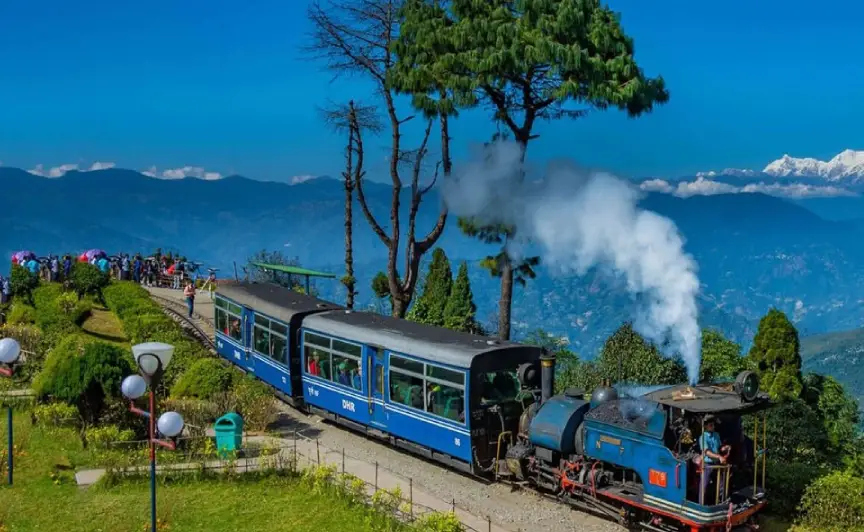
There are no reviews yet.